

While Metro Manila has its share of iconic streets, Escolta is still the most iconic of them all. Though the street is no longer the center of commerce and business it once was, the architectural marvels that line Escolta serves as a vivid reminder of the glitz and glamour of this fabled street.
Escolta used to be called the Queen of Manila’s Streets, as it was Manila’s center for business, transportation, fashion, and entertainment during both the Spanish and American eras and even beyond. Escolta’s proximity to the Pasig River, Binondo, and Intramuros contributed to its ascent. Escolta was at its absolute peak during the American Era, when most of the iconic structures that define Escolta were built. The street was a showcase of popular architecture styles of the time, as well as a place of “firsts” for the country — the first elevator, the first air-conditioned rooms, the first cinema, and the first ice cream parlor, among others.
Places of Interest
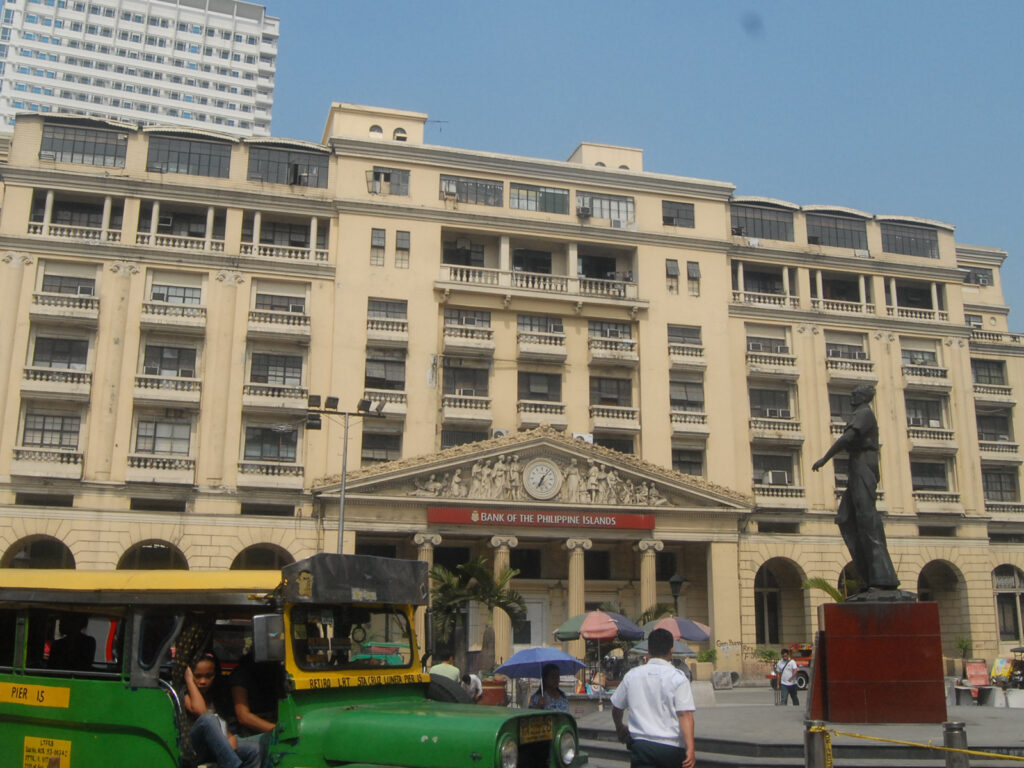
Built in 1937, the Roman Santos Building was built on the site of Monte de Piedad Bank Building, the first commercial bank in the Philippines. This Neoclassical structure was not finished until the 1950s because of delays brought about by World War II. Over the course of its existence, it became an American Red Cross hospital, a Prudential Bank branch, and a supermarket. It is currently owned by the Bank of the Philippine Islands, and while the building is in a utter state of disrepair, rumors have it that there are plans to restore the building.
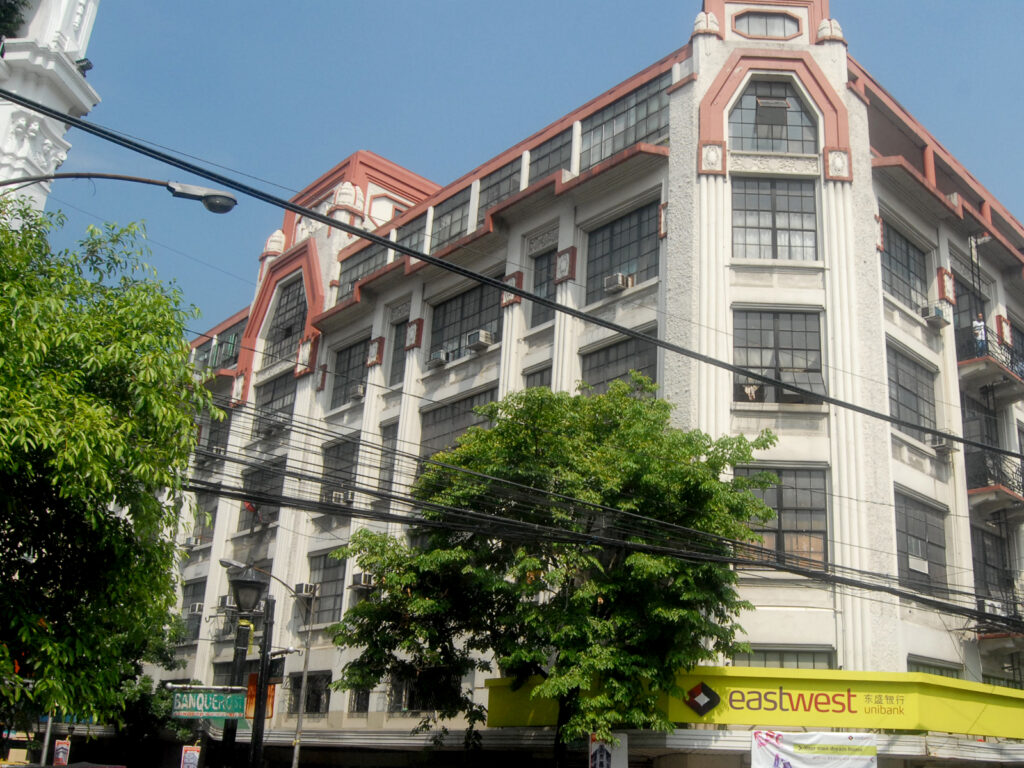
Once known as the Perez-Samanillo Building, The First United Building was built in 1928 and is considered to be one of the first Art Deco buildings in the Philippines. Andres Luna, an esteemed architect and the son of Juan Luna, was one of the first to introduce the Art Deco style in the country, and he certainly applied that style to the First United Building. Notable establishments includes the Berg’s Department Store and Lyric Music store during the prewar days, as well as the offices of movie stars Nora Aunor, Lito Lapid, Gabby Concepcion, and Dolphy in the postwar years. First United is the epicenter of the Escolta Revival, when various art and heritage groups put up shop in the building and started staging activities within the vicinity. The most notable of these events is the Escolta Block Party.
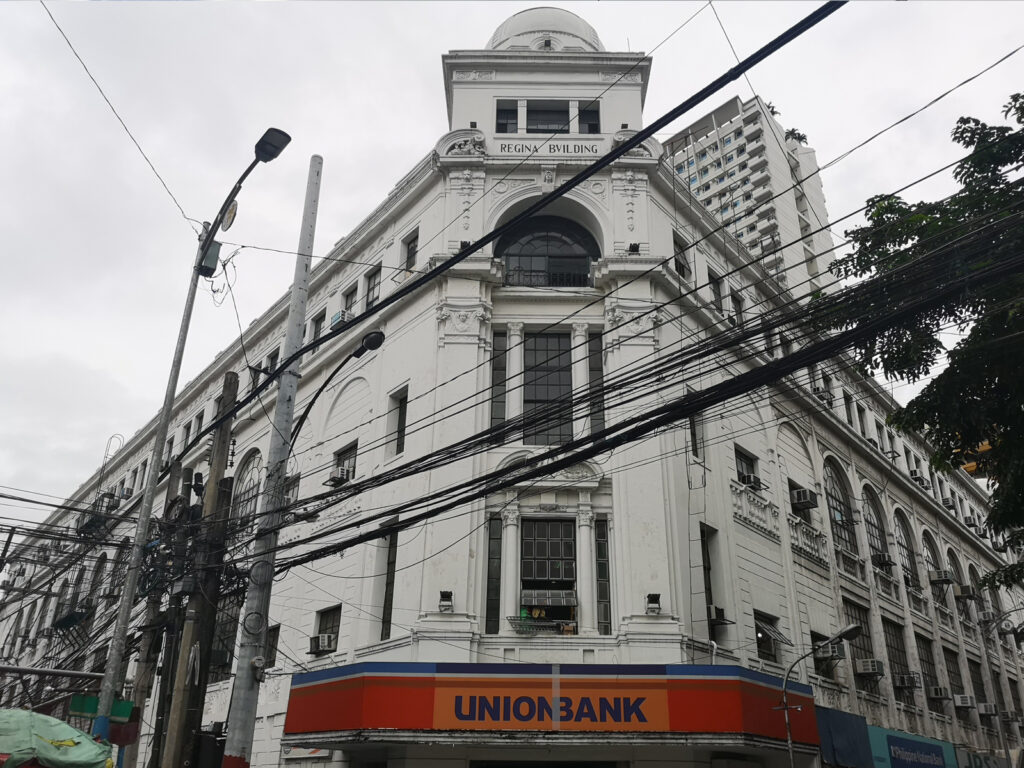
The Regina Building, originally known as Roxas Building, was designed by Andres Luna and was built in 1915. Luna combined the styles of neoclassicism and beaux-arts for this building. The Roxas Building was a three-storey structure when it was first built, then a fourth floor was added by Fernando Ocampo when the De Leon family bought it from the Roxases. The building was renamed Regina Building in 1926. The most distinct feature of the building are the domes at the corners facing Escolta at the exterior, and an ornate staircase in the interior.
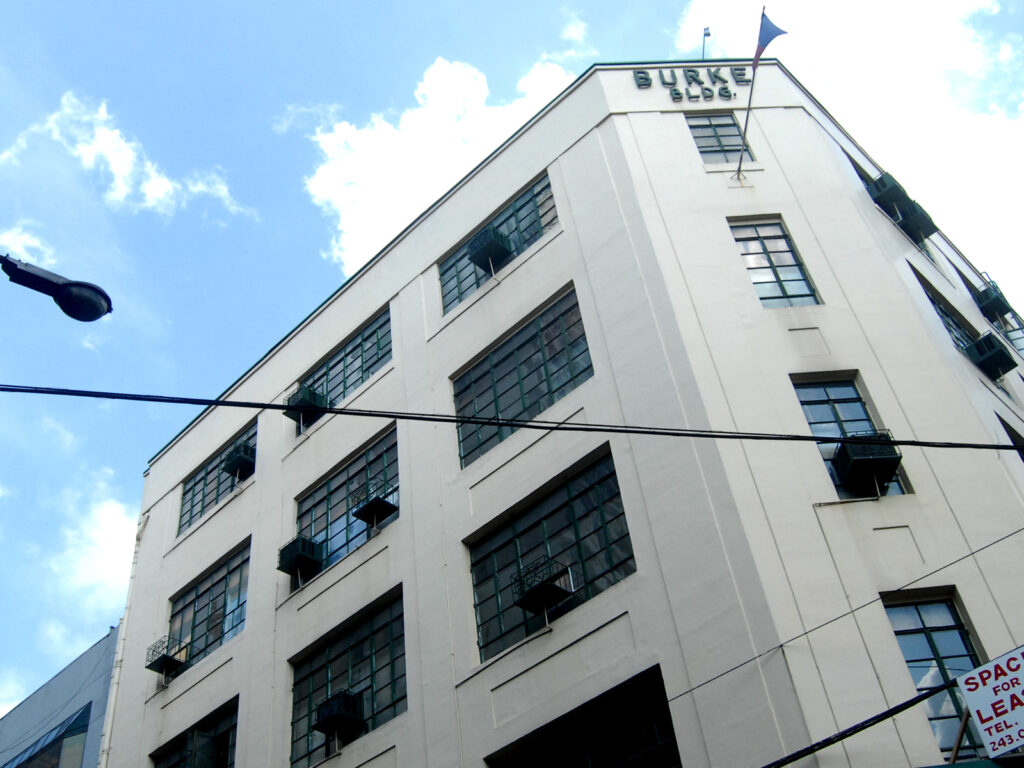
Built in 1919, the Burke Building is one of the first concrete buildings along Escolta. Named after the philanthropist, William J. Burke, the building also featured the first elevator in Manila.
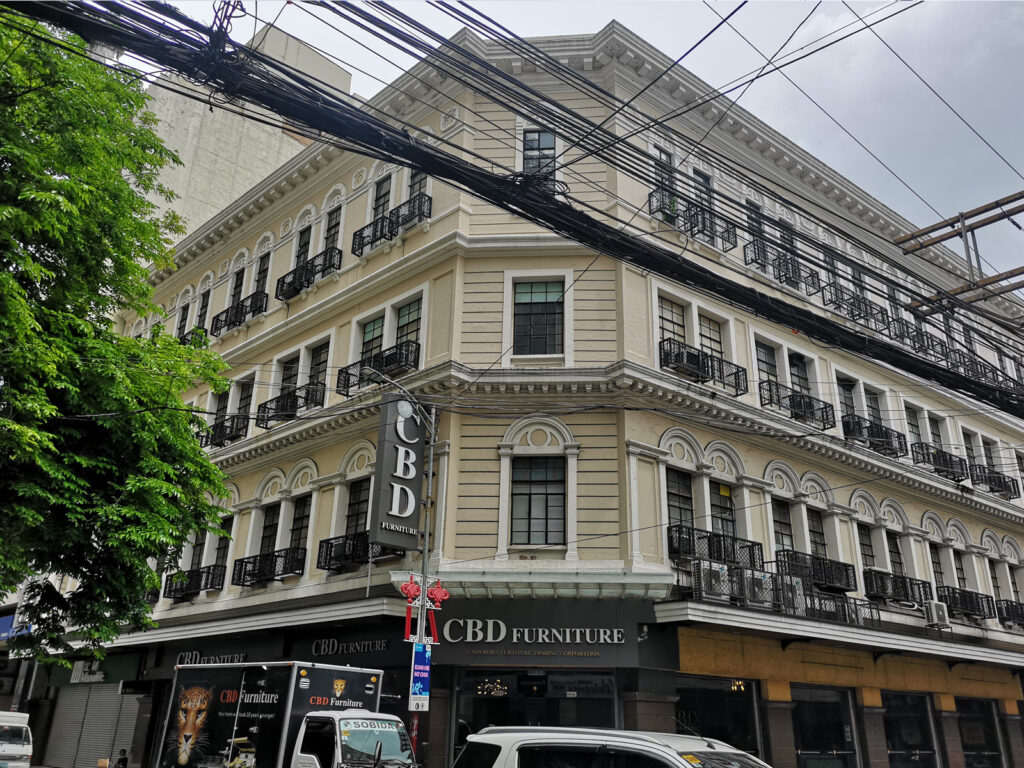
Built in the late 1920s, the Natividad Building is a sterling example of Beaux-Arts architecture in the Philippines. Notable establishments that called this building home include the Insurance Commission, DZRH Radio Station, and the Philippine Education Company.
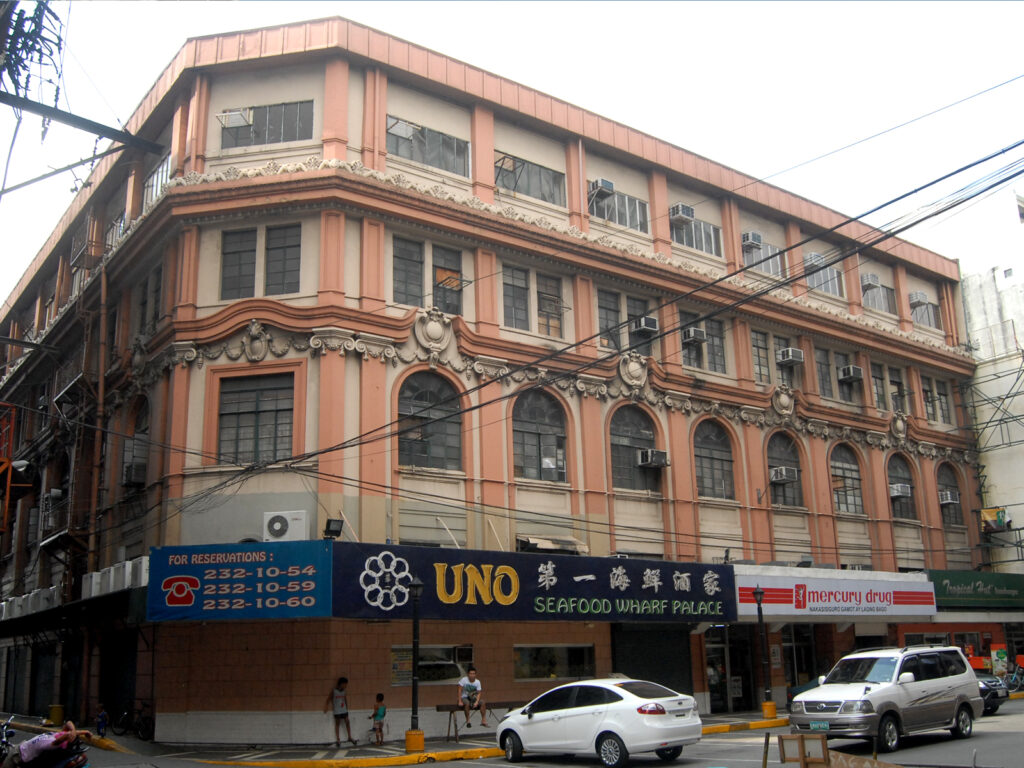
The Calvo Building was designed by Fernando Ocampo, who also designed the additional sections of the Regina Building, and was inaugurated in 1938. The building was the first headquarters of TV network giant GMA-7, then known as DZBB. The Calvo Building also features an 80+ year old elevator that still works and a bote-dyaryo themed museum featuring old bottles and newspapers.
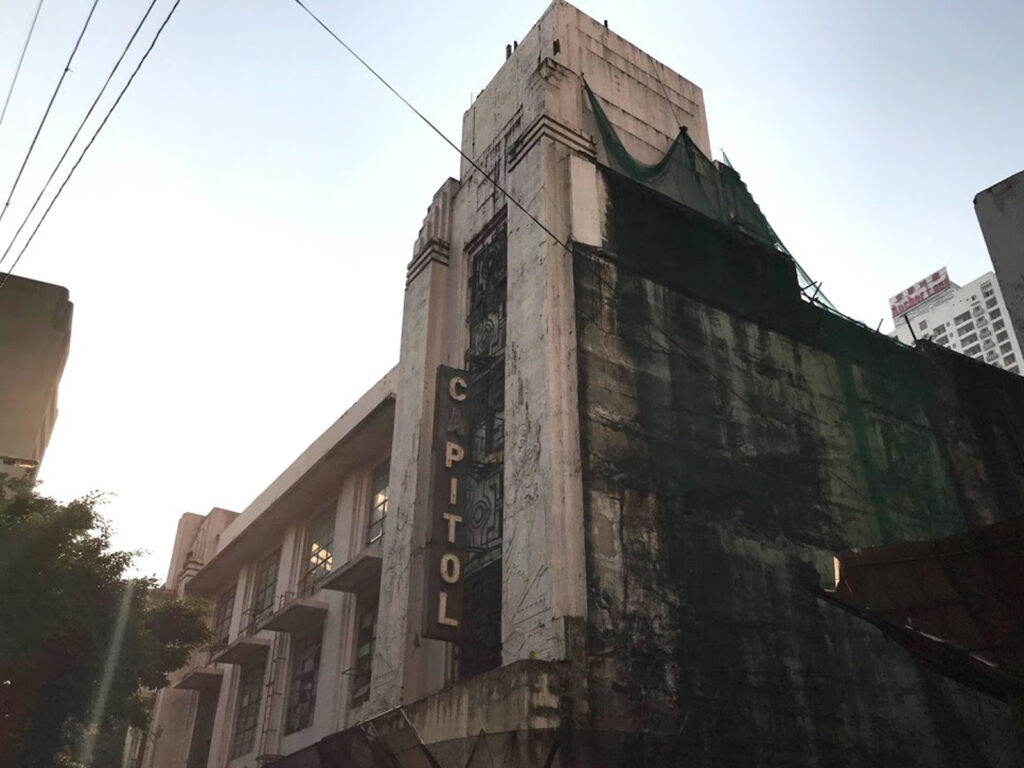
The Capitol Theater, an absolute triumph in Art Deco, was built in 1935 based on a design by National Artist Juan Nakpil. Its interior used to be adorned with a famous mural called Rising Philippines, a collaboration of 3 celebrated painters, namely National Artists Botong Francisco and Victorio Edades, and Galo Ocampo. The tower facade features bas reliefs called the Muse of Comedy and Muse of Tragedy, and they were designed by Italian sculptor Francesco Monti. The Capitol Theater barely survived the Battle of Manila, and it was forced to close for good in the 80s. Currently, only the bas reliefs remain as a high rise building will stand in the former theater’s place.
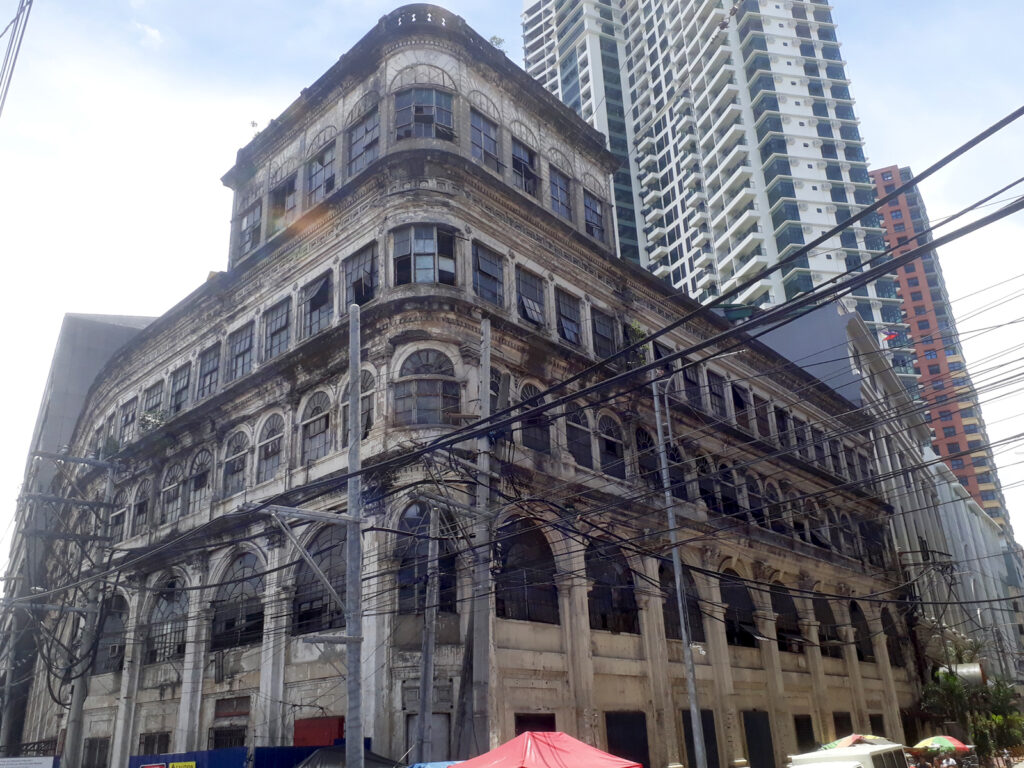
The El Hogar Building technically isn’t in Escolta Street, but that hasn’t stopped people from thinking that it is. The building was built in 1914, based on a design by Ramon Irureta Goyena. The building was a wedding gift by Antonio Melian, Count of Peracamps, to Margarita Zobel. The architectural style of building is Beaux Arts, just like Calvo Building. In 2017, the National Museum of the Philippines declared the El Hogar as an Important Cultural Property.
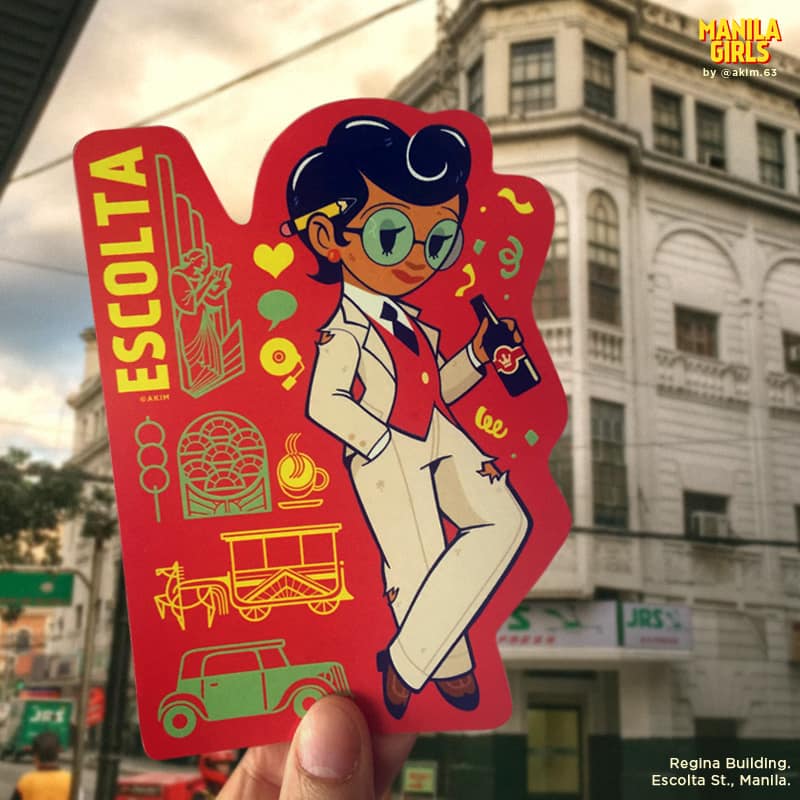
“Lady Escolta is a lover from the past
Gravely abused but she prevailed with class
Once queen of the downtown scene
She’s adored by the elites with parades and parties
But decades went by and so did her youth, it seems
She is now worn and she is now torn
like a pair of old blue jeans
Neglected by most and loved by a few
Her intricate beauty still shines through and through
But will she surrender and concede to the new
Or will she remain and continue to reign
Only she knows what she’ll do
But even though her future’s unknown
One thing’s for sure, she still sits on the throne”
“Escolta” sticker copy, written by Kenny Tai
Things to do

The Hub: Make Lab is a incubator marketplace for up and coming creative brands. Born from the monthly Future Markets that used to be held in that same spot from 2013 to 2016, Hub has played host to many cool happenings in and around Escolta.
Ground Floor, First United Building, Escolta
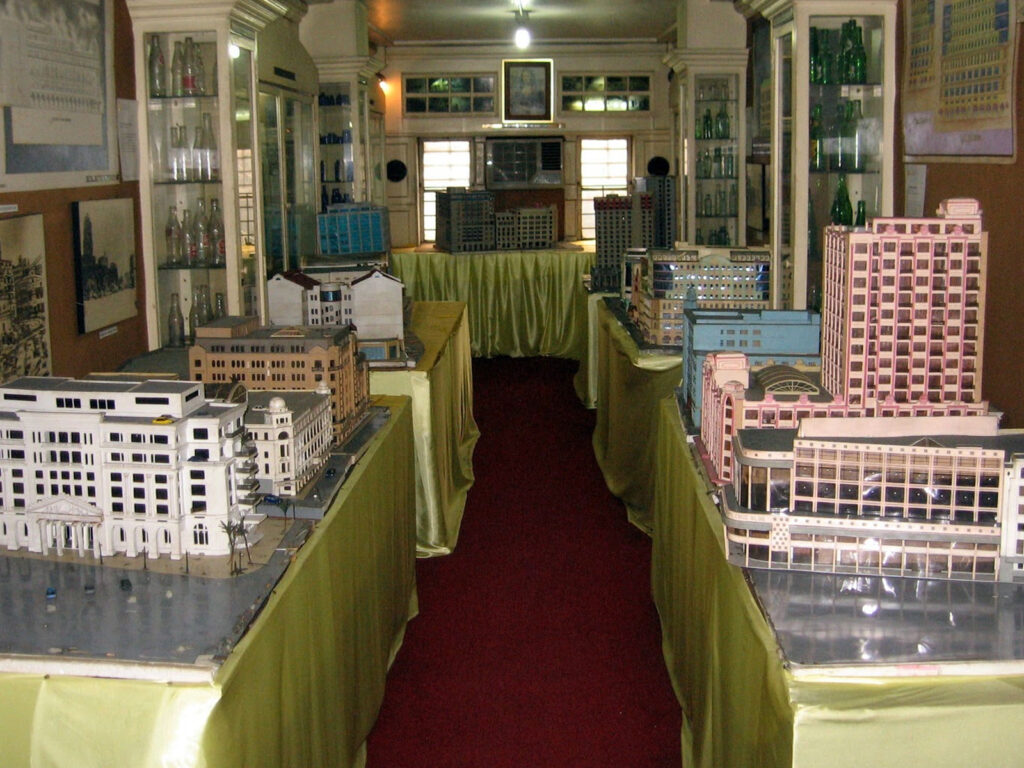
Calvo Building, Escolta
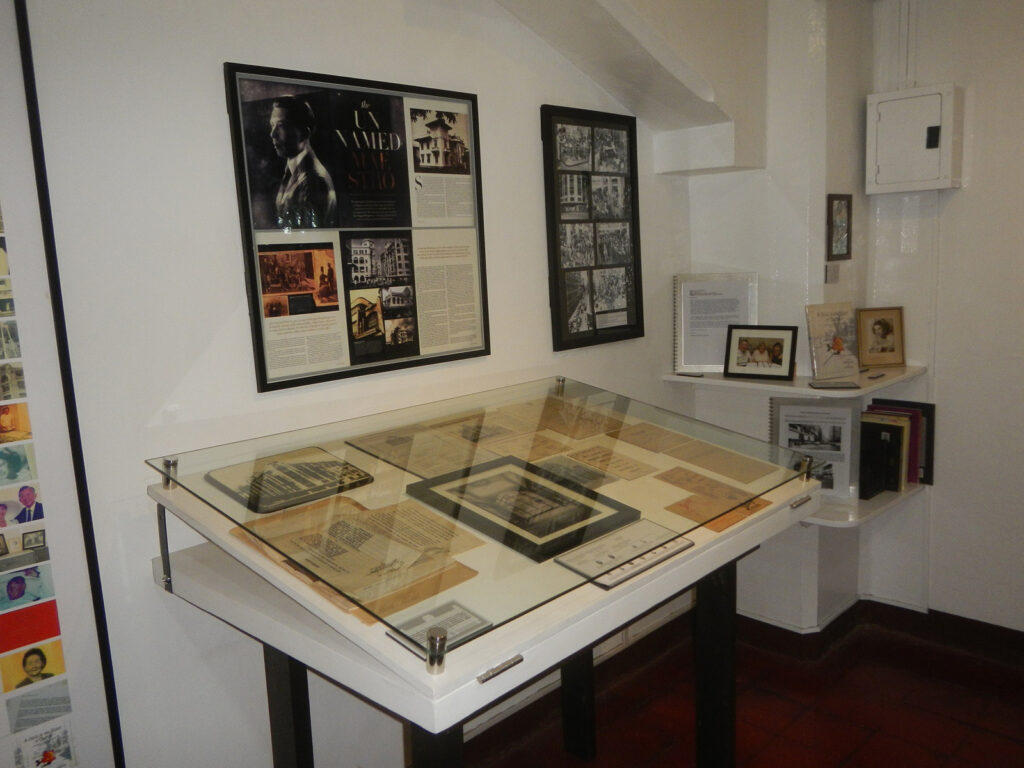
The First United Building Community Museum is a museum dedicated to the history of the First United Building, as well as personal effects of Sy Lian Teng, the patriarch of the current owners. You will also find stuff about Old Escolta here as well.
First United Building, Escolta
Did you know?
Escolta was the site of many firsts in the Philippines: The first elevator (Burke Building), the first air-conditioned building (The Crystal Arcade), and the First Ice Cream Parlor (Clarke’s).
Where to eat
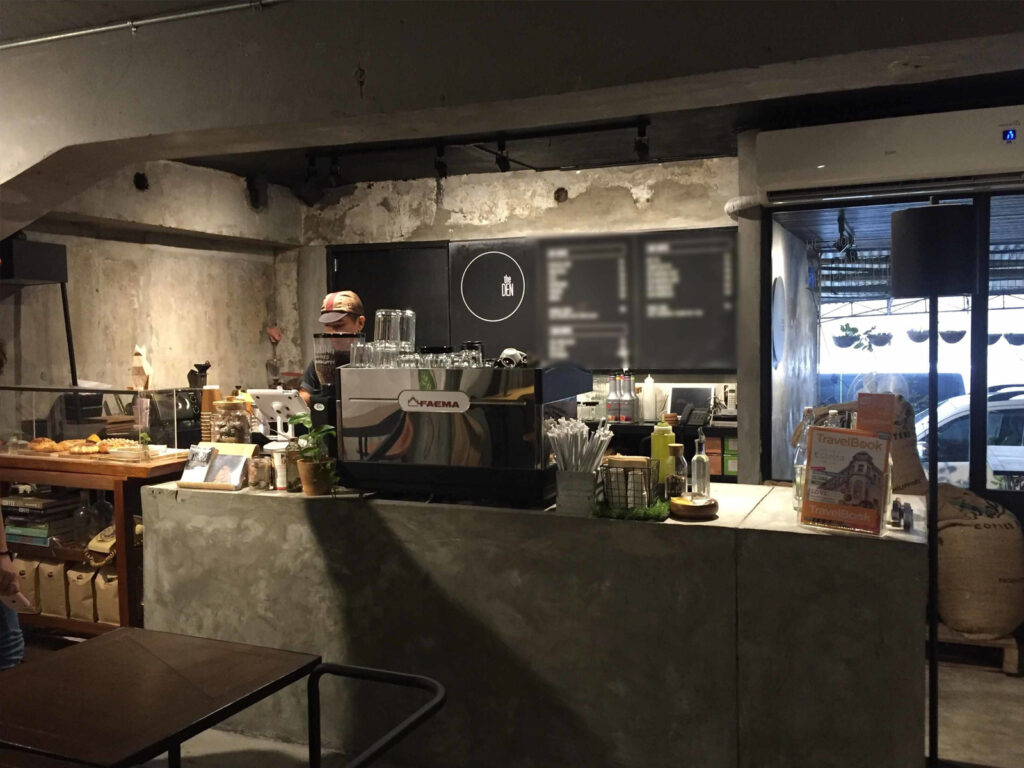
The Den
Of course there was going to be a hipster coffee joint inside First United. What did you expect, a Starbucks? With that said, the coffee’s amazing and the food is great. Do try out The Berg, a coffee concoction named after a department store that used to be located at the ground floor of First United Building.
First United Building, Escolta

Uno Seafood Wharf Place
If you’re looking for a banquet experience and Binondo is just too crowded for you, Uno is a solid contender. Aside from having lauriat offerings, Uno has great and unique individual offerings as well.
Calvo Building, Escolta
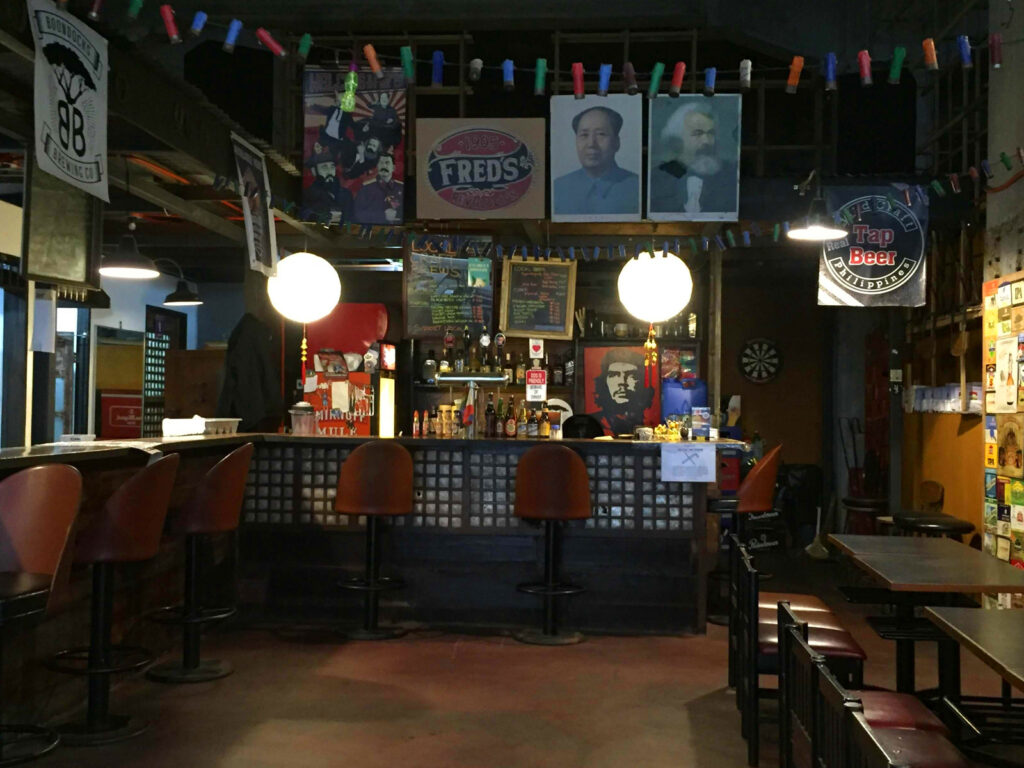
Fred's Revolucion
Easily the best bar in Escolta, because it’s the only bar in Escolta. Kidding aside, Fred’s is a solid pub, with local and craft beers on tap, delicious bar chow, and a killer vibe.
First United Building, Escolta
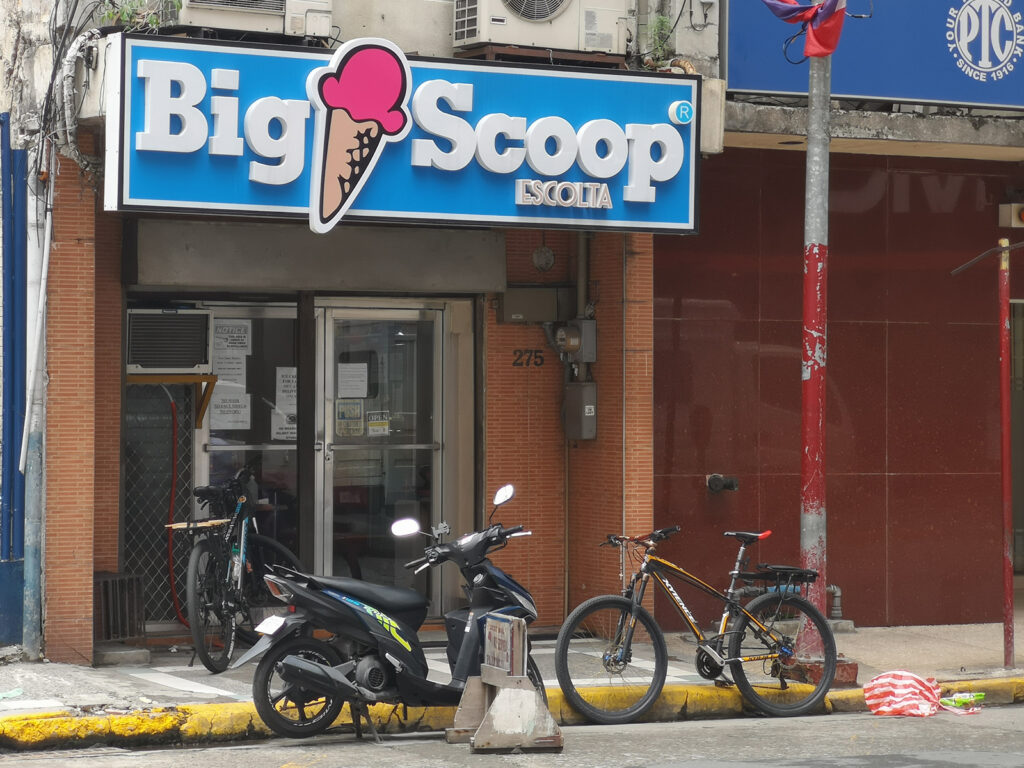
Escolta Ice Cream and Snacks
Just ignore the interiors for a second, as the place is dying for a total remodel. Escolta Ice Cream and Snacks is selling both Big Scoop Ice Cream and Creamery Ice Cream, two highly beloved ice cream brands in the metro. All they need is an updated interior, and it will be absolutely perfect.
Escolta
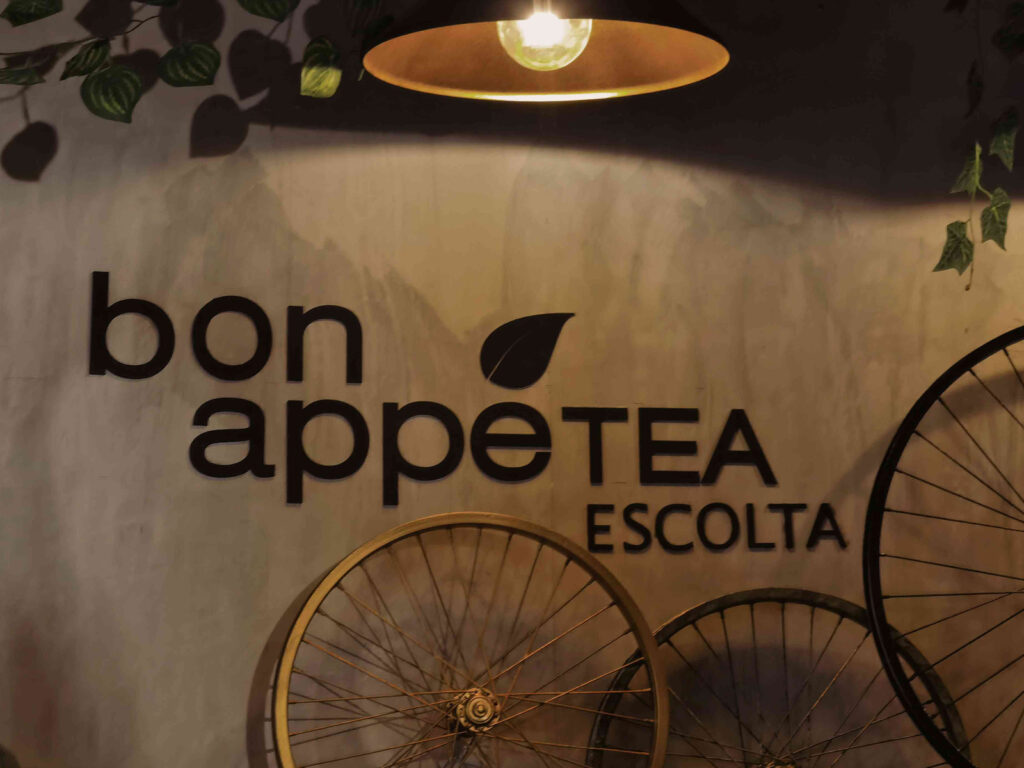
Bon Appetea
Sure, this new franchise branch in Escolta may not be the most exciting when it comes to offerings (Typical Milk Tea/Boba/fruit shake place), it quickly created a clientele for serving steady food and drinks, and for having the best aircon in Escolta.
Escolta Parking Building, Escolta
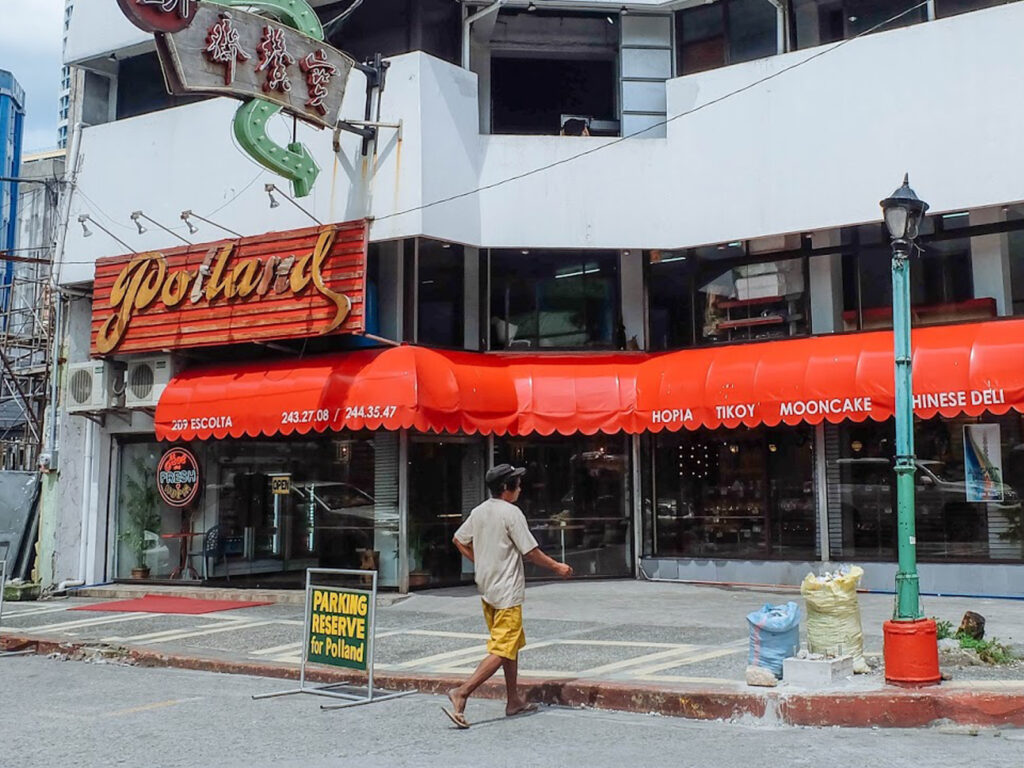
Polland
While overshadowed by Eng Bee Tin (And come on now, how can you compete with that), Polland has a loyal clientele who swears by their hopia. This resto also has very interesting and flavorful products.
Escolta
Photo Album
About the Manila Girls™
The Manila Girls are humorous and sarcastic personifications of popular districts and locations in Manila and beyond. While the Girls appear cute and adorable, their appearance and depiction reflect the current state of the areas they represent. Miss Escolta look dapper yet highly disheveled, Miss San Nicolas has a peg leg, Miss España gleefully jumps across flooded waters, and so on and so forth. The frankness of the statements the Manila Girls make stand in stark contrast to their cute appearance, making it easier to absorb the message the Girls are trying to convey.
The Manila Girls are a creation of Kenny Tai under her Akim brand.

Copyright 2021 WanderManila.online





